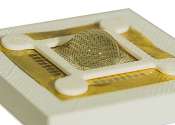A drone that gets around obstacles like an insect
Physics student Darius Merk has used an insect-inspired algorithm to develop a drone that can navigate around obstacles. His research could prove particularly useful in a natural disaster.
Jul 15, 2016
0
22









